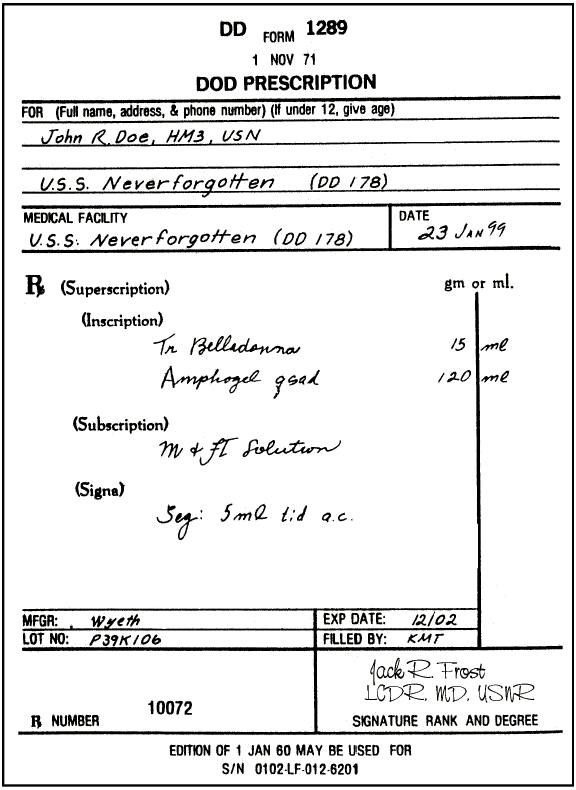|
PRESCRIPTIONS
LEARNING OBJECTIVE: Recall the
parts of a prescription, authorized
prescribers and how prescriptions are
written, filled, verified, labeled, and filed.
The most important tool used by the pharmacy is
the prescription. A prescription is a written or
computerized order from a healthcare
provider (prescriber) directing the pharmacy
to compound and dispense a drug or
medication for a patient to use.
Of special importance is your understanding and
conformance to the following protocols:
All information pertaining to a prescription is confidential and should
not be divulged to any persons not
specifically involved in the treatment.
No prescription or any of its parts may be applied or transferred to any
person other than the patient
specified.
To fill a prescription correctly, you must
thoroughly understand the prescription writing and
filling process. Because regulations and
policies governing pharmacies sometimes
change, it is important for you to be
familiar with pharmacy policies in the Manual
of the Medical Department (MANMED),
NAVMEDP-117. The MANMEDis the basic
guide to pharmacy operations.
PARTS OF THE PRESCRIPTION
Currently, there are two standardized forms used
for prescriptions: the DoD Prescription, DD Form
1289 (fig. 6-3) and the Polyprescription,
NAVMED 6710/6 (fig. 6-4).
Information placed on these forms must
be either typewritten or legibly handwritten in ink
or indelible pencil. In addition to these two forms,
many of today's fixed medical facilities
(e.g., naval hospitals and medical
clinics) now have automated pharmacy
systems that allow healthcare providers to
enter prescription requests into computers in their
offices instead of handwriting
prescriptions. Prescriptions, written
or computerized, have, for the most
part, the same information requirements. The
only major difference is that automated prescriptions
do not require the prescriber's signature.
DD 1289 is used extensively for outpatient
prescriptions. For this reason, the key parts of DD
1289 will be discussed in the following
sections. See figure 6-3 for examples
of specific block entries.
Patient Information Block
In the patient information block, located at the top
of the DD1289, the patient's full name and
date of birth are required. At most
medical facilities, however, additional
patient information is added to this block.
This additional information usually includes the
patient's duty station; social security
number with family member prefix; rate;
and branch of service.
Medical Facility and Date Block
The medical facility block, located below the
patient information block, should contain the name of
the medical facility or ship where the
prescription was written. Completion of
this block is important if the source
of the prescription needs to be traced.
The date block, located to the right of the medical
facility block, should contain the date in
which the prescription was written.
Prescription Block
The large block in the center of the DD 1289 is the
prescription block. It contains four parts:
the superscription, the inscription,
the subscription, and the signa.
SUPERSCRIPTION.-The superscription "Rx"
means "take" or "take thou" or, in effect, "I want this
patient to have the following medication."
INSCRIPTION.-The inscription is that part of
the prescription that lists the names and
quantities of the ingredients to be
used. This part of the prescription is
of utmost importance, since the spelling of many
unrelated drugs is similar. Whenever there is doubt
as to the drug or the amount listed in
the inscription, the individual filling
the prescription should always verify
the inscription with the prescriber.
NOTE: The drug should be written
generically, and the dosage size or strength
written metrically.
SUBSCRIPTION.-The subscription follows
the inscription and is that part of the prescription that
gives directions to the compounder.

Figure 6-3.-DOD Prescription form.
SIGNA.-The signa, not to be confused with the
prescriber's signature, is the part of the prescription
that gives the directions for the patient.
This portion is preceded by the
abbreviation "Sig."
Prescriber Signature Block
Finally, the prescriber signature block, located at
the bottom of the form, must contain
a legible signature of the prescriber,
as well as the prescriber's full name,
rank, corps, and service, stamped, typed, or
handprinted. Mimeographed, preprinted, or
rubber-stamped prescriptions may be used, but
signatures must be original and in the
handwriting of the prescriber.
Facsimiles are not acceptable.
|













